Solving Temperature Fluctuations with AI Tools
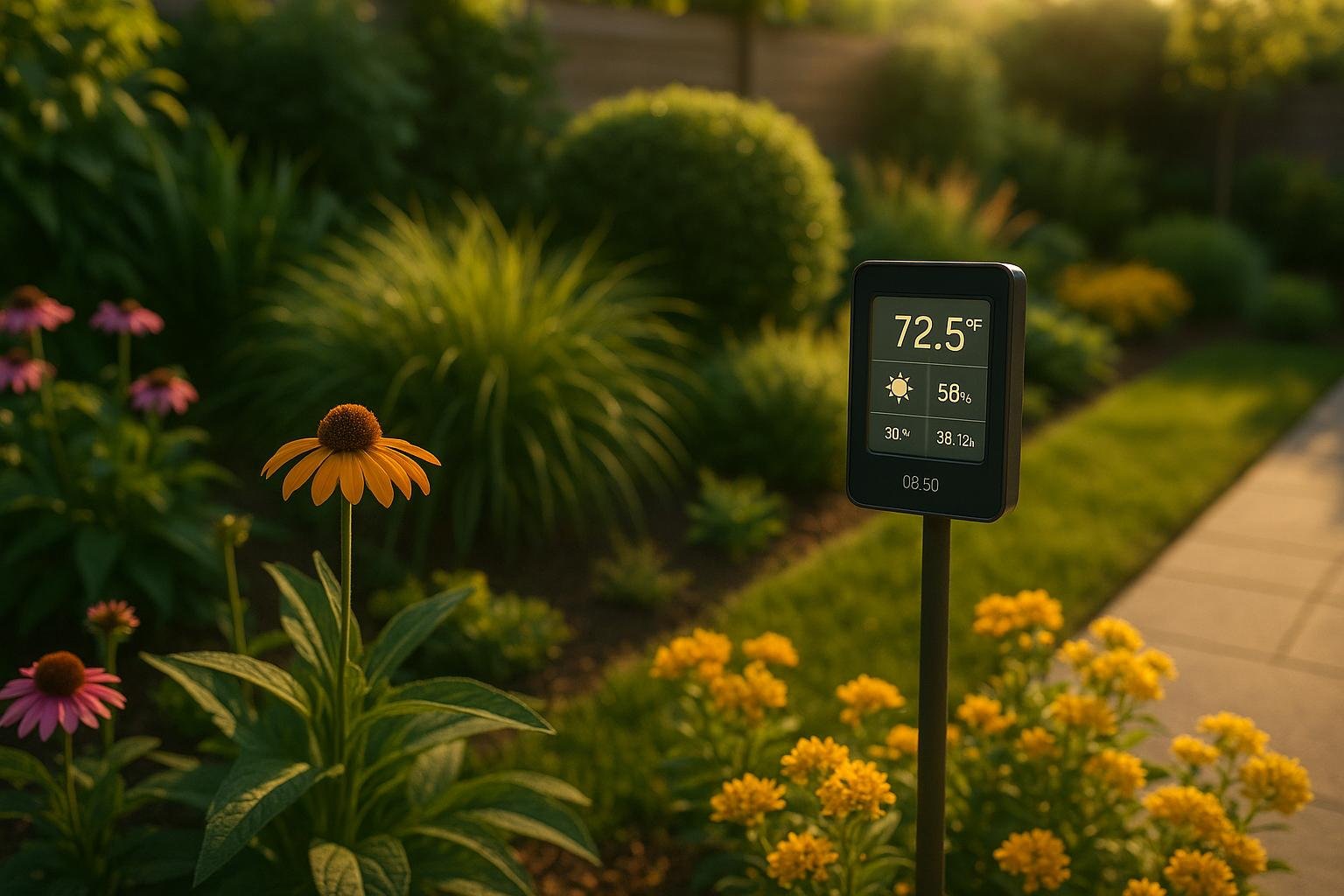
Fluctuating temperatures can harm plants, reduce yields, and stress gardens. AI tools are changing the game by offering precise, automated solutions to these challenges. Here’s how:
Key Takeaways:
- Real-time Monitoring: AI sensors track soil, air, and humidity levels to detect harmful temperature changes instantly.
- Predictive Analytics: AI forecasts weather patterns, helping gardeners plan planting schedules and protect crops ahead of extreme conditions.
- Smart Systems: Automated shading, irrigation, and cooling systems adjust to real-time changes, saving water and improving yields.
- Custom Recommendations: AI suggests plants suited to your local climate and designs garden layouts to naturally protect against temperature stress.
Quick Benefits:
- Up to 50% water savings with smart irrigation.
- Crop yields boosted by 20%-30% with AI-powered decisions.
- Early detection of plant issues with 90% accuracy using AI apps.
AI tools simplify garden management, making it easier to protect plants from unpredictable weather while saving time, resources, and money.
The FIRST AI Controller for Growing | AC Infinity Controller AI+

AI Tools for Temperature Monitoring and Prediction
AI-driven tools are reshaping how gardeners monitor and predict temperature changes, offering precision and automation that go beyond traditional methods. These tools combine real-time tracking with predictive analytics, helping gardeners address temperature shifts before they can harm plants. Here's a closer look at how AI sensors and predictive tools are changing the game.
Real-Time Temperature Tracking with AI Sensors
AI-powered sensors are a significant upgrade from basic thermometers and manual monitoring. These devices continuously track temperature, detecting changes instantly to protect your plants. Unlike traditional tools that just record data, these sensors use machine learning to process large datasets, recognize patterns, and differentiate between normal fluctuations and potentially harmful shifts.
What sets them apart is their ability to monitor multiple environmental factors simultaneously. AI sensors can measure soil temperature, air temperature, and humidity levels at the same time, giving you a complete picture of your garden's microclimate. When choosing sensors, look for ones with multiple measuring points for better accuracy and wireless connectivity like Bluetooth or WiFi, so you can get real-time updates on your smartphone.
These systems are also smarter about alerts. Basic sensors often trigger alarms for minor, harmless changes, but AI-powered tools use advanced algorithms to filter out false alarms and notify you only when real action is required.
The accuracy is a game-changer. Traditional tools often detect problems only after they’ve already started affecting your plants. In contrast, AI sensors use predictive capabilities to identify potential issues before they occur. For example, AI-enabled soil sensors can optimize watering schedules, preventing overwatering or underwatering, which supports healthier root development.
Predictive Data Analysis for Garden Planning
While real-time sensors provide immediate insights, predictive analytics takes it a step further by forecasting future conditions. By analyzing historical trends and current data, these tools help gardeners make proactive decisions.
The benefits are practical and wide-ranging. Predictive analytics can guide you in preparing for rainfall variability, scheduling planting times, and deciding the best moments for sowing and harvesting. By studying past weather patterns, you can select plants suited to your local climate and plan care strategies for the entire growing season.
One standout example is Predictive Weather, launched by Wadsworth Control Systems in December 2024. This system tracks localized weather data - temperature, humidity, precipitation, and wind - to predict greenhouse needs and automatically adjust protective measures before severe weather hits.
"With Predictive Weather, we go beyond standard monitoring to add a new layer of protection." – Tyler Whitley, head grower at Station 10, Bonnie Plants
The impact is measurable. Farmers have reported up to a 15% increase in yields and a 20% reduction in losses due to extreme weather. AI-powered decisions have also improved yield predictability by as much as 25%, while cutting down on unnecessary resource use.
For home gardeners, these tools are just as useful. Predictive analytics can help pinpoint the last frost dates in spring and the first frost dates in fall, making it easier to plan planting times. They can also forecast potential pest outbreaks or disease risks, giving you time to take preventive measures.
The accessibility of these tools is growing, too. New cloud-based platforms and mobile apps are making AI-powered weather tools easier to use and more affordable for gardeners of all skill levels. As E.D. Gibson, an author, explains:
"AI isn't just helping farmers respond to climate change; it's helping them anticipate and adapt to it." – E.D. Gibson, Author
This technology shifts gardening from reactive to proactive, allowing you to fine-tune care for each plant’s needs, whether it’s adjusting nutrients or optimizing light exposure during critical growth stages.
Using AI to Design Temperature-Resistant Gardens
Creating a garden that can handle temperature extremes takes more than just picking tough plants. Today, AI-powered tools are stepping in to design gardens that shield plants from temperature stress through smart layouts and thoughtful planning.
AI Garden Layouts for Climate Protection
AI garden design software takes planning to a new level by analyzing a variety of environmental factors to create layouts that naturally manage temperature. These tools evaluate weather patterns, soil conditions, and plant characteristics to predict how your garden will perform throughout the season.
One of the standout features of AI design is its ability to consider elements like airflow, sun exposure, and microclimates within your garden. Using this data, AI suggests plant placements that create natural cooling zones, windbreaks, and shaded areas. For example, taller plants might be positioned to provide shade for heat-sensitive ones, while open pathways can encourage airflow during hot summer days.
Take AIGardenPlanner, for instance. This platform lets you upload photos of your garden and transforms them into professional layouts designed to manage temperature effectively. By incorporating your location and climate data, it offers designs from over 50 garden styles that are not only visually appealing but also practical for handling temperature changes.
Another game-changer is smart irrigation. AI tools optimize watering schedules by analyzing weather forecasts and soil moisture levels, ensuring plants stay hydrated during heat waves. This prevents the stress plants experience when high temperatures are paired with water shortages.
These tools also allow gardeners to visualize their designs and simulate plant growth over time. Smart irrigation systems, in particular, are becoming increasingly advanced, automatically adjusting watering schedules based on real-time weather data.
With strategic layouts in place, AI also helps refine plant choices to better suit your specific climate.
Custom Plant Recommendations for Your Climate
AI’s ability to process detailed climate data makes it an ideal tool for matching plants to local conditions. By analyzing factors like location, weather patterns, soil type, and native plant species, AI can recommend plants that naturally thrive in your area.
For example, when you input your zip code, AI systems can identify your climate zone, typical temperature ranges, and seasonal weather trends. These systems also take into account the amount of sunlight your garden receives, ensuring that the suggested plants will flourish in the available light.
In October 2023, an AI-powered plant matching system demonstrated this in action. For a garden in Asheville, NC, with six hours of daily sunlight, the system recommended Eastern Redbud, Butterfly Weed, Oakleaf Hydrangea, and Fothergilla - plants well-suited to the region's temperature shifts.
But AI doesn’t stop at climate matching. It can also analyze soil composition to identify nutrient gaps and predict future needs. This means the recommended plants won’t just survive - they’ll develop strong root systems to better handle temperature extremes.
Seasonal timing is another area where AI excels. If a season is expected to be unusually dry, AI can suggest drought-resistant crops and adjust planting schedules to avoid harsh weather. Additionally, it can estimate yields up to 90 days before harvest by analyzing weather and soil data, giving you a clearer picture of how your garden will perform.
AIGardenPlanner's AI Plant Advisor takes this a step further by providing personalized plant suggestions tailored to your location, climate, and preferences. It also includes detailed growing guides, turning plant selection into a precise, data-driven process. This ensures your garden is set up to thrive, no matter how unpredictable the weather might be.
sbb-itb-4d6a8dd
🚀 Ready to Reinvent Your Garden?
Join thousands of homeowners who have transformed their gardens using our AI design tool. Upload one photo to explore endless possibilities.
Get your AI garden designs →Automated Temperature Control Systems with AI
AI-powered systems can take the guesswork out of managing garden temperatures by automatically responding to changing conditions. Using real-time monitoring and predictive analytics, these systems act swiftly to maintain the ideal environment, turning your garden into a well-defended space against temperature swings.
Smart Shading and Insulation Systems
AI-driven shading systems offer a powerful way to protect plants from extreme temperatures. By using real-time data from multiple sensors, these systems adjust shade coverage dynamically based on factors like ambient temperature, light intensity, and weather forecasts. For instance, when temperatures climb beyond optimal levels, AI controllers can activate shading devices, open greenhouse vents, or trigger cooling mechanisms to stabilize the environment.
When paired with smart irrigation systems, these shading solutions can deliver even greater efficiency. Studies show such integrations can save up to 20% more water compared to traditional methods. These systems work by continuously monitoring soil moisture, temperature, and light levels, coordinating shading and watering schedules intelligently. Advanced setups even use deep learning algorithms to detect plant diseases and automate irrigation based on real-time moisture readings. For gardeners aiming to adopt this technology, selecting plant health monitors equipped with multiple sensors is key.
Automated Watering and Cooling Systems
To complement smart shading, automated watering and cooling systems bring another layer of stability to garden management. These AI-controlled systems adapt seamlessly to temperature changes by analyzing data from weather forecasts, soil conditions, and plants themselves. The results? Real-world applications have shown water savings of 25% to 45% and yield increases of up to 30%.
Several success stories highlight the potential of these systems. Frosty Vineyards in Napa Valley reduced water use by 30% while boosting grape yields. EcoGreen Landscapes in Melbourne cut water waste by 40%. Green Fields Co. in Kansas saw a 25% rise in crop yields, while a vineyard in California managed to lower water consumption by 35% without compromising crop quality. In the Netherlands, AI-controlled irrigation in greenhouse farming improved crop yields by 20%. Meanwhile, an Australian farm utilized satellite-based AI to trim irrigation by 25% while achieving greater crop uniformity.
"It essentially takes the guesswork out of farming."
- Luke Malan, Managing Director, Aglantis
These systems go beyond just watering - they predict weather patterns and align irrigation schedules with energy demands, ensuring resources are used efficiently. This proactive approach not only safeguards plant health but also reinforces consistent temperature management.
"This technology represents a major shift towards data-driven, sustainable agriculture where AI and IoT optimize every drop of water for maximum farming efficiency."
- Kamyar Karimi, IoT Researcher, La Trobe University
For those planning to implement these systems, it’s worth investing in platforms that offer remote monitoring and control via mobile apps or web interfaces. Advanced garden management platforms provide a comprehensive solution, integrating sensor data for temperature, humidity, carbon dioxide, pH, soil moisture, ventilation, irrigation, and artificial lighting. Many even include databases tailored to different crops and their growth stages, ensuring precise and efficient management.
Real Examples and Benefits of AI Garden Management
AI technology is proving to be a game-changer in garden management, offering tangible results across various applications. From small organic orchards to large-scale commercial farms, these tools are helping tackle challenges like temperature fluctuations while cutting costs and boosting efficiency.
Case Studies: AI in Action for Better Gardens
Real-world examples highlight how AI complements, rather than replaces, traditional farming methods. These success stories show how technology enhances human expertise, making gardens more resilient and productive.
An Organic Orchard in India transformed its approach to disease management in 2021 by using an AI-powered detection app. The app analyzes plant photos to identify potential diseases or nutrient deficiencies and recommends targeted solutions. This shift has been especially beneficial for maintaining healthy crops while minimizing chemical use.
"The app suggests everything: chemical management, biological management, and mechanical management. Our focus is on organic farming, so whatever information is available regarding organic farming, we apply that." - Organic Orchard Owner
By integrating AI insights with traditional practices, the orchard improved decision-making, reduced reliance on chemical fertilizers, and promoted soil health - key steps toward sustainable farming.
A Commercial Crop Farm in northern India addressed unpredictable weather conditions by adopting an AI-based weather prediction app. This farm, which grows commercial trees, wheat, and seasonal vegetables, used the app to better manage water levels and protect harvested wheat from sudden rainfall.
"At times, after threshing, the wheat was kept in the fields, and suddenly it would rain at night, and the wheat would be wet and damaged. Now, we work by watching the forecast. Harvesting and threshing are mostly done after consulting the weather predictions." - Crop Farm Worker
This approach not only safeguarded crops but also improved water management and reduced soil erosion.
A Family Cereal Farm in northeastern India took advantage of an AI-based crop advisory app that offers weather forecasts, planting recommendations, and disease detection. By following the app's guidance, the farm switched to drought-resistant hybrid maize seeds, which increased productivity and helped the farm adapt to temperature stress.
"Traditional knowledge has its own importance, but when it comes to dealing with climate change, it will be important to use technology and take advantage of it. Both should be considered side by side." - Cereal Farm Farmer
These examples demonstrate how AI-powered tools provide actionable insights that lead to better garden management. For those interested in similar solutions, platforms like AIGardenPlanner offer tools to design gardens tailored to local climate conditions. Its AI Plant Advisor recommends plants suited to specific environments while helping create layouts that naturally withstand climate variations.
Cost Savings and Increased Efficiency
Beyond healthier plants, these case studies highlight the financial benefits of AI garden management. By reducing resource waste and increasing productivity, AI tools deliver measurable savings.
Water savings are one clear advantage. In 2023, GreenIQ reported that their AI-driven smart irrigation systems cut water use by up to 50%. By analyzing weather forecasts and plant needs, these systems optimize watering schedules, lowering utility bills and supporting more sustainable practices.
Higher yields are another major benefit. Gro Intelligence found that users of its Gro AI platform saw a 20% increase in crop yields in 2023. The platform uses machine learning to analyze weather patterns, soil conditions, and plant data, enabling more precise decisions about watering and pest control.
Disease prevention also saw improvements. In 2023, Plantix achieved a 90% accuracy rate in diagnosing plant issues using its AI-powered app. The app’s image recognition technology helps farmers identify diseases and nutrient deficiencies early, allowing for timely interventions that prevent crop loss.
These efficiencies add up over time. Fewer plant losses due to better disease detection, optimized irrigation that reduces water and energy costs, and smarter temperature management all contribute to long-term savings.
For home gardeners, platforms like AIGardenPlanner make these tools accessible for just $4.99 per month. The platform’s AI-driven recommendations help users choose plants suited to their local climate, reducing the need for costly artificial temperature control.
The blend of reduced waste, healthier plants, and improved yields makes AI adoption a smart investment. As one farmer put it:
"The things that have been carried out through generations about what should be planted in which season, how the field should be prepared, and how things should be done, these are the traditional knowledge. What new do we add to this? When will it rain? Should we irrigate or not? When should the crop be harvested, and where should the products be sold? This is what is new, and with app tools, we get to know how these should be done." - Cereal Farm Farmer
Conclusion: AI as the Future of Garden Management
AI is reshaping how we approach garden management by tackling challenges like temperature fluctuations and resource inefficiencies. Through automated systems, it adjusts irrigation and climate controls while forecasting weather changes, making gardens more resilient and efficient.
Key Points
AI integrates smart sensors and automation to monitor and adapt garden conditions in real time. By tracking factors like soil moisture, ambient temperature, and local weather, these systems optimize watering and climate management, reducing the stress caused by extreme conditions.
This approach also helps save resources, benefiting both the environment and your wallet. For example, AI systems can cut energy use in agriculture by up to 15%. Over time, these savings make AI tools a practical and cost-effective choice for gardeners.
AI also excels at early detection of plant health issues. Apps like Plantix use image recognition to identify problems, enabling gardeners to act quickly and prevent crop losses. As Willie Drew explains:
"AI tools learn from your garden, adjusting water, care, and pest control, enabling gardeners to grow more with less".
Additionally, AI encourages sustainable practices by minimizing waste and limiting chemical use. By making data-driven decisions about fertilizers, pest control, and resource allocation, gardeners can adopt more eco-friendly methods. These advantages make AI a valuable ally in modern gardening.
Getting Started with AI Garden Tools
Ready to bring AI into your garden? Start small and build your way up:
- Try a plant identification app: These tools are easy to use and help you learn which plants thrive in your area, based on factors like soil type, sunlight, and climate.
- Upgrade to smart irrigation: Smart watering systems use sensors to monitor soil moisture and temperature, automatically adjusting schedules to meet your plants' needs. This prevents overwatering or underwatering.
- Use AI garden planners: Platforms like AIGardenPlanner simplify garden design by offering personalized plant recommendations tailored to your location and preferences. With over 50 garden styles and detailed maintenance guides, these tools make planning and upkeep easier.
- Join AI gardening communities: Connect with others to share tips, experiences, and advice. These groups can provide valuable support as you explore AI-driven gardening.
AI is making garden management more accessible and effective than ever. Whether you're dealing with unpredictable weather, aiming to conserve resources, or looking to grow healthier plants, AI tools can help you achieve your goals. By starting with these simple steps, you'll set the stage for a thriving, efficient garden.
FAQs
How can AI tools detect harmful temperature changes in my garden?
AI tools rely on advanced sensors and real-time data analysis to keep an eye on your garden's environment. They monitor key factors like temperature, humidity, and soil conditions to understand what’s typical for your specific setup. If something unusual happens - like a sudden temperature drop or spike - the AI can quickly assess whether it’s a harmless fluctuation or something that could harm your plants.
With this information, you can respond promptly by tweaking watering schedules, adding protective covers, or even using heating solutions. This ensures your garden stays in great shape, even when the weather takes an unexpected turn.
What key features should I consider in an AI-powered garden management tool?
When picking an AI-powered garden management tool, prioritize features that simplify gardening and boost efficiency. Opt for tools that provide real-time monitoring of soil conditions, weather patterns, and temperature to ensure your plants stay healthy. Systems offering personalized plant recommendations tailored to your local climate, soil, and sunlight conditions can make plant selection much easier.
You might also want to look for tools with automated watering systems to manage irrigation efficiently and cut down on water waste. Tools equipped with AI-driven pest and disease detection can help spot problems early and suggest effective treatments. Lastly, a user-friendly interface and strong data privacy measures are key for a hassle-free and secure gardening experience.
How can AI tools help me select plants that thrive in my local climate and soil?
AI tools make selecting the right plants easier by analyzing essential environmental factors such as temperature, rainfall, and soil type specific to your location. Using this information, these tools offer tailored recommendations for plants that are well-suited to thrive in your garden.
Take AIGardenPlanner, for instance. It leverages local climate data and growing zone details to suggest plants that align with your region's conditions. This approach not only promotes healthier plant growth but also minimizes the chances of choosing unsuitable species, making the gardening experience more rewarding and stress-free.
🎨 Visualize Your Dream Garden Today!
Transform any outdoor space into a professional landscape design in minutes. Just upload a photo, choose your style, and let our AI do the rest.
Start your garden transformation now →Related posts
Related Articles
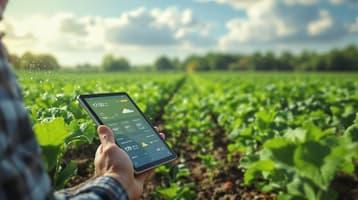
How AI Improves Weather-Based Irrigation
AI irrigation systems optimize watering by using real-time weather and soil data, ensuring water savings and healthier plants.
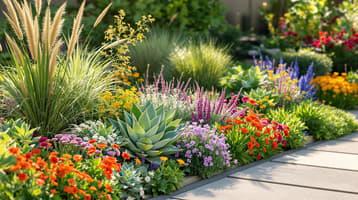
AI Tools for Creating Low-Maintenance Plant Combinations
Explore AI tools that simplify garden planning by matching plants to your conditions, ensuring low-maintenance and visually appealing combinations.
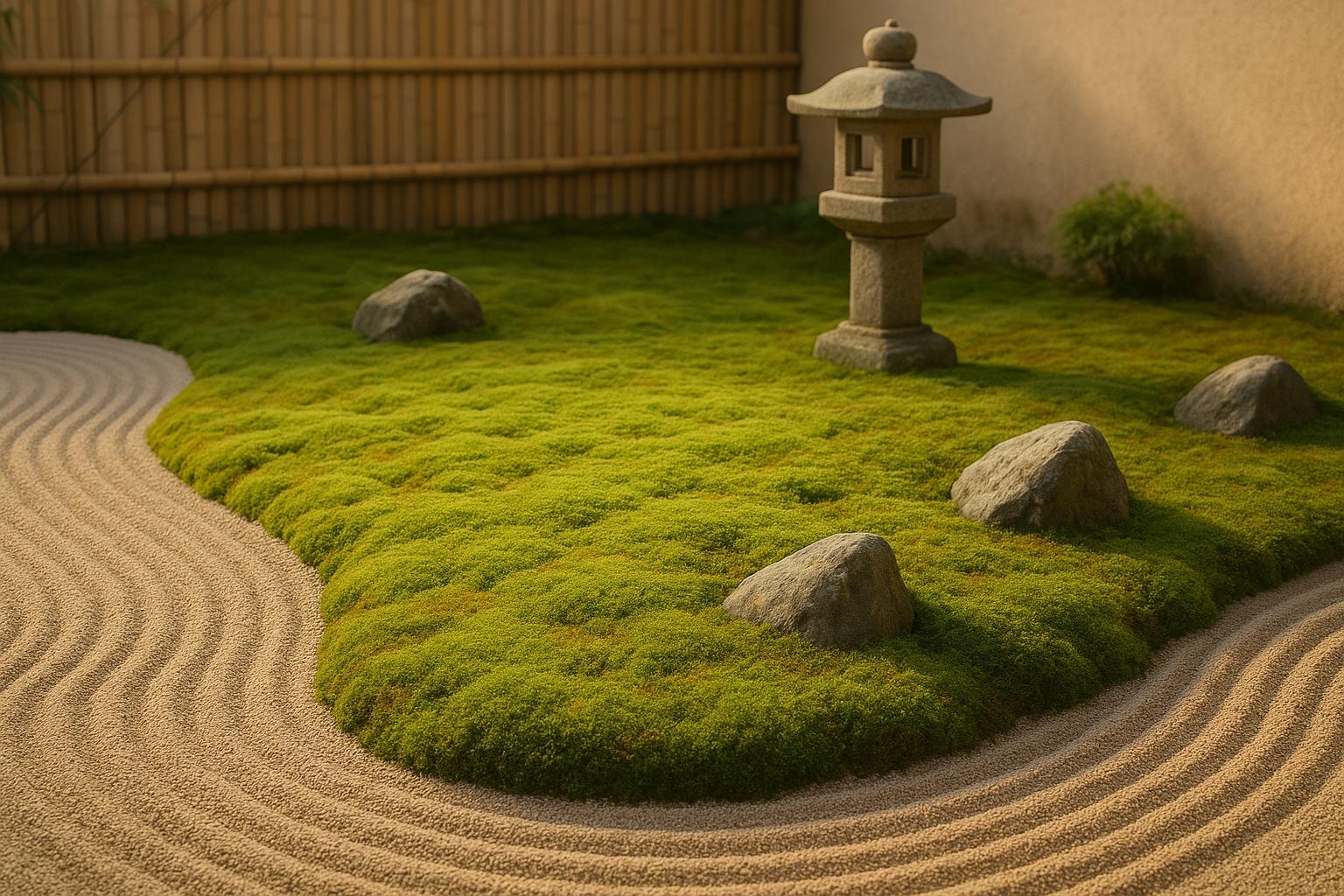
Ultimate Guide to Moss Cultivation for Zen Gardens
Learn how to cultivate moss for Zen gardens, ensuring a tranquil atmosphere with minimal maintenance and tailored care techniques.
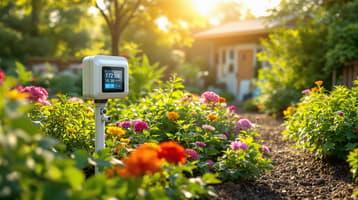
How AI Predicts Garden Maintenance Needs
Explore how AI enhances garden maintenance by optimizing watering, fertilizing, and pruning schedules for healthier plants and efficient resource use.

Seasonal Garden Design: Lessons from Chinese Practices
Explore seasonal garden design inspired by Chinese practices, blending nature and philosophy for beauty throughout the year.
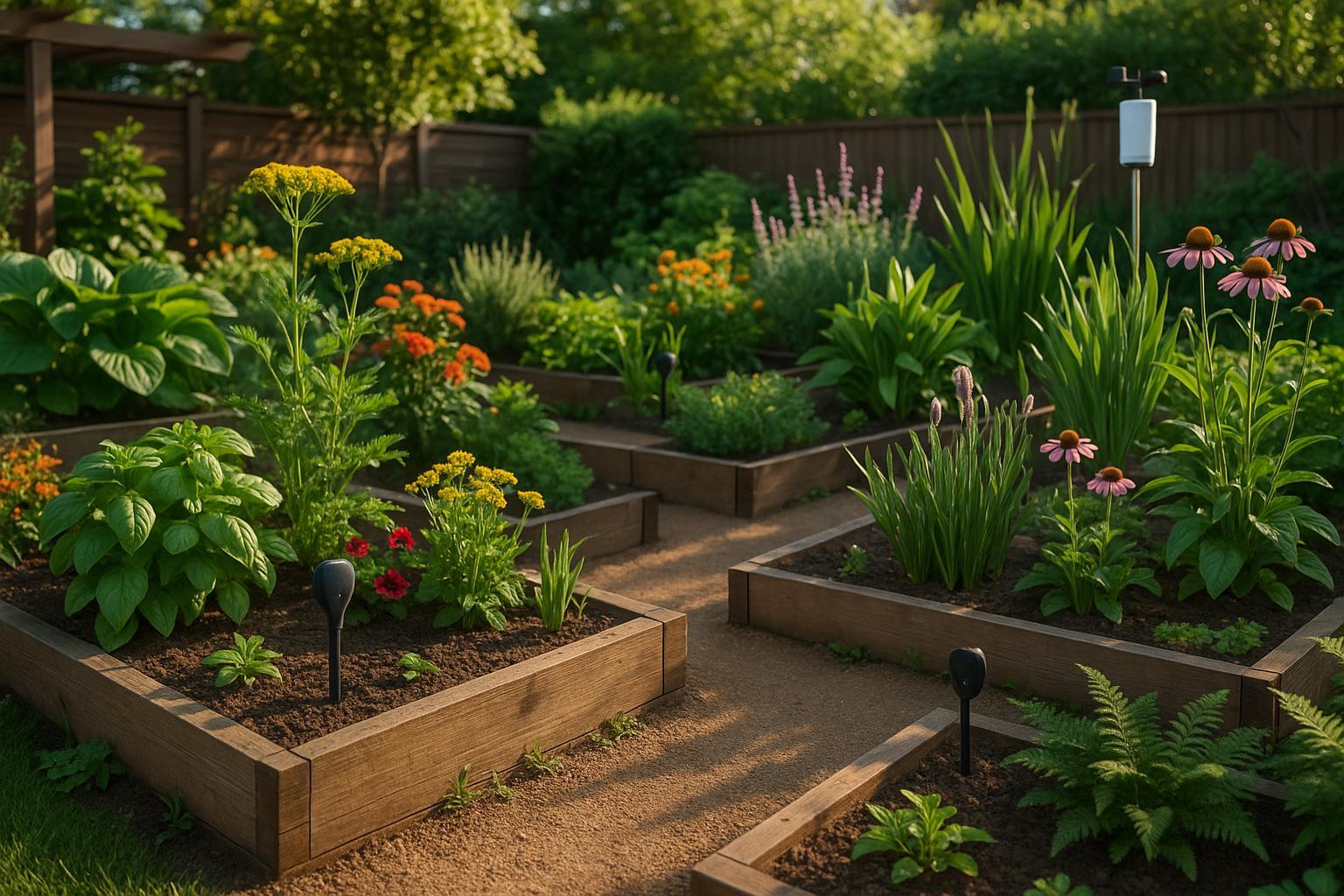
AI Data Analytics for Climate-Resilient Gardens
Explore how AI data analytics can enhance gardening practices, from pest management to resource optimization, for climate-resilient gardens.